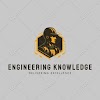Micro/Pico Hydraulic Turbines
There are many turbine types available to convert hydraulic energy to mechanical energy. However, only a few can be applied in micro/pico hydroelectric power stations. Pelton/Turgo, cross flow and propeller turbines and pumps as turbinesThere are many turbine types available to convert hydraulic energy to mechanical energy. However, only a few can be applied in micro/pico hydroelectric power stations. Pelton/Turgo, cross flow and propeller turbines and pumps as turbines (PAT) are the types that have been widely used to produce energy in micro/pico hydroelectric power units.
1). The Pelton/Turgo Turbine:
The Pelton turbine is an impulse turbine, invented by Lester Allan Pelton (1829–1908), and is perfect for high head hydro plants. The high pressure flow enters the runner by means of a single/multi jet nozzle system. The turbine discharge can be regulated by a needle valve to adjust the output power. The runner is of a cylindrical shape consisting of several buckets, which have a special design to capture the energy from the jets of water. The jets strike the centers of the buckets and exit from the sides. The design and layout of a series of buckets is realized in order to avoid the possibility that the flow into one bucket influences the others. The recommended number of buckets is between 18 and 24 (PAT) are the types that have been widely used to produce energy in micro/pico hydroelectric power units.
A deflector is installed between the runner and the nozzle deviating the water jets to prevent them from entering the runner in emergency situations, such as the increase in the rotational speed in no-load conditions.
The Turgo turbine is very similar to the Pelton turbine. However, the jets of water enter the buckets at an angle of approximately 20°. Therefore, the Turgo turbine can be applied in power units with a lower head and higher flow capacity.
2). The Cross Flow Turbine
This turbine,one of the impulse turbine types, has been widely used in small hydropower stations. Heads ranging from 2 to 400 m and discharges from 20 to 2000 l/s can be covered by cross flow turbines. This turbine has a flat curve of efficiency covering various flow rates. In fact, by acting on a simple governor, it is possible to send a low flow rate to a smaller part of the runner to obtain a better efficiency. Water passes from the inlet channel and the guide vane and enters the runner.






0 Comments